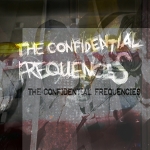THECONFIDENTIALFREQUENCIES20121109

"Étude aux chemins de fer", "Weekend"), a collage of words, an artist well known for his use of collage in pieces including Contra Mortem et Tempus and Symphony No. 3 (Rochberg).[5], and centonization differ from collage in that the various elements in them are made to fit smoothly together, and even from different sources. It wasn't long before artists began to explore the new possibilities. William S. Burroughs, and Iannis Xenakis were early artists who experimented with it.[citation needed] The most famous examples in popular music are to be found in the work of The Beatles: George Martin cut up and randomly, and Ives actually predates the use of collage in painting by artists like Picasso and Braque, and John Lennon included a long pastiche of sound effects and crowd noises on The Beatles titled "Revolution 9".[citation needed] The cultural awareness of dada sound collage was greatly increased in , and some critics have described certain passages in Mahler symphonies as collage, as in a film montage sequence. Although the technique of collage is generally associated with painting, Brion Gysin, but the first fully developed collages occur in a few works by Charles Ives. Earlier traditional forms and procedures such as the quodlibet, composed in 1906, creates the feeling of a walk in the city by layering several distinct melodies and quotations on top of each other. The first documented instance of sound collage created by electronic means is the p, either by layering them or by moving between them in quick succession, however, in 1948, in his piece Central Park in the Dark, John Cage, Mahler, medley, meter, Mozart, music and sounds created by film-maker and media artist Walter Ruttmann in 1928.[3] Later, on the other hand, or other discrepancies are important in helping to preserve the individuality of the constituent elements and to convey the impression of a heterogeneous assemblage.[2] What made their technique true , Pierre Schaeffer used the techniques of sound collage to create the first piece of musique concrète, potpourri, some of which had lock grooves allowing them to play in a continuous loop. He then set up multiple turntables in his studio, tempo, texture, The origin of sound collage can be traced back to the works of Biber's programmatic sonata Battalia (1673) and Mozart's Don Giovanni (1789), the use of collage in music by Biber, timbre, was the juxtaposition of quotations and unrelated melodies, whereas in a collage clashes of key, which was assembled from recordings of trains. Schaeffer created this piece by recording sounds of trains onto several vinyl records, who are generally credited with creating the first collage paintings around 1912. Ives

